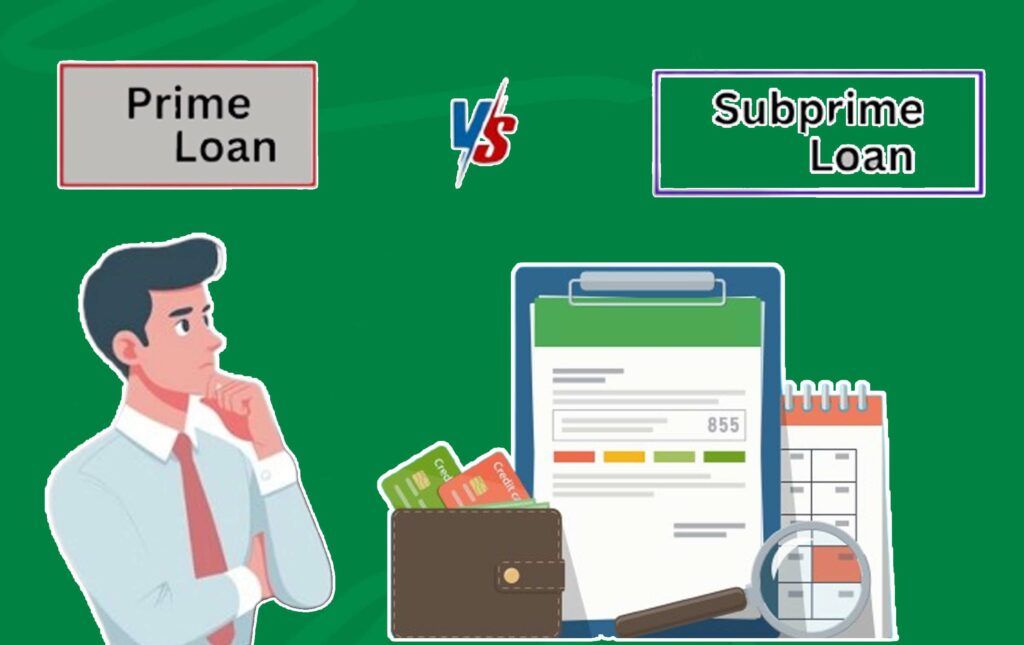Prime vs. Subprime Loan: What’s the Difference? – Different FICO scores vary; borrowers may be classified under prime and subprime. Borrowers who have the strongest FICO scores may be eligible for prime loans, while borrowers with bad credit may be eligible for subprime loans.

Borrowers with good credit and stable income are less likely to default on a loan taken, while borrowers with unstable income and bad credit are more likely to default on loans. Subprime borrowers are less privileged to get flexible loan options, and sometimes they require cosigners. However, prime borrowers are considered less risky, while subprime borrowers are considered high-risk borrowers.
What Does it Mean to Be a Prime or Subprime Borrower?
Prime borrowers are those viewed as less likely to default on a loan, while subprime borrowers are considered high-risk due to a greater likelihood of default and poor credit history. Lenders use various FICO Score ranges to distinguish between loan applicants.
Borrowers with high credit scores are typically classified as prime or super-prime, whereas those with lower scores fall into the subprime or deep subprime categories. It’s important to note that the specific credit score ranges defining prime and subprime status can vary by lender. However, lenders who use FICO Scores often follow the general ranges outlined below.
- Prime (FICO Scores of 660 to 719)
- Subprime (FICO Scores of 580 to 619)
- Super-prime (FICO scores of 720 or more)
- Near-prime (FICO scores 620 to 659)
- Deep subprime (FICO scores below 580)
Borrowers who fall under these credit scores are then determined on what type of loan to be given and whether or not the borrower is a high risk.
Prime vs. Subprime Loan
When lenders review your loan application, they go through different factors, which include your credit score, credit history, and your DTI ratio. They use these factors to determine your creditworthiness and how much risk you are to them as a borrower. You may be considered high risk if you have no credit or you have bad credit.
You may also be considered high-risk if you have serious negative events like bankruptcy on your credit history. Most lenders use risk-based pricing to determine loan terms, including rates and fees. There are different scoring models, and every lender has their requirements for processing your creditworthiness.
A 670 to 739 FICO score is considered prime, and it qualifies you for loans at competitive rates. If your FICO score is 740 and above, you are considered super prime, and you may qualify for a much lower rate. Generally, subprime borrowers are referred to as those with 580 to 669 FICO scores or those with fair credit.
Subprime loans have the same types of loans available to prime borrowers. Some subprime loan types include subprime mortgages, personal loans, and auto loans. Because these loans are made especially for subprime borrowers, there are some differences between prime and subprime loans.
Prime vs. Subprime Loan: What’s the Difference?
The table below shows the differences between prime and subprime loans.
| Prime | Subprime | |
| Higher interest rates | Prime borrowers get relatively lower interest rates than subprime. | Unlike prime, these borrowers are determined to be higher-risk borrowers, they get higher interest rates. |
| Larger down payments | High down payments. | Borrowers going for subprime mortgages or car loans pay higher down payment than prime. |
| Smaller loan amounts | They are allowed to borrow more. | Subprime does not allow borrowers to borrow as much as prime borrowers. |
| Higher fees | Lower origination fees and late payment fees. | Higher origination fees and late payments. |
| Longer repayment periods | Shorter repayment term. | Longer repayment term. |
| Adjustable interest rates | Fixed interest rates. | Adjustable interest rates. |
Depending on what type of borrower you may be, it is advisable to be aware of the difference between prime and subprime borrowers.
How Do Prime and Subprime Loans Affect Credit?
Prime and subprime loans both affect your credit in almost the same way. When you make your loan repayments on time, both can get you to improve your credit. If you default on your loan repayment, you may cause harm to your credit in both prime and subprime. As a subprime borrower who intends to grow your credit score to the prime range, you will need to carry out the following actions to make that possible.
- Ensure your loan repayments are recorded.
- Repay your loans on time.
- Do not panic if you do miss payments on your loan; instead, make payments as soon as you can.
Doing this can help improve your credit and give you better chances at qualifying for prime loans.



